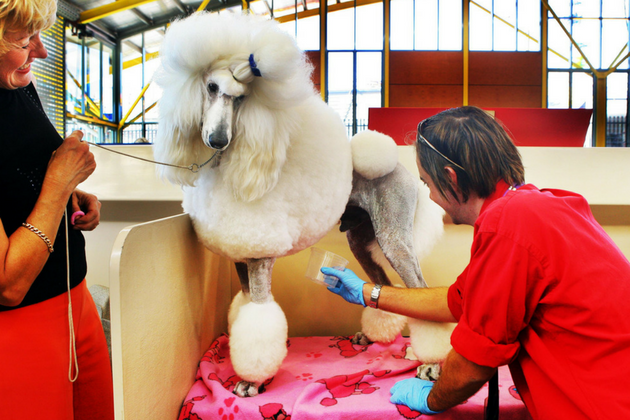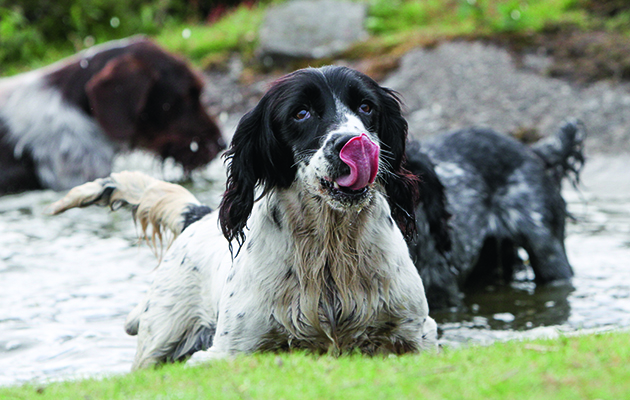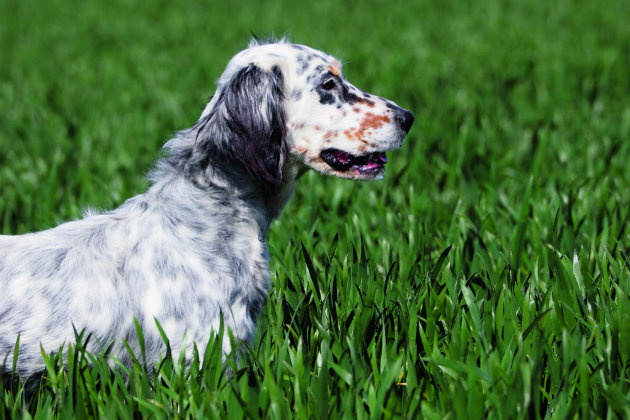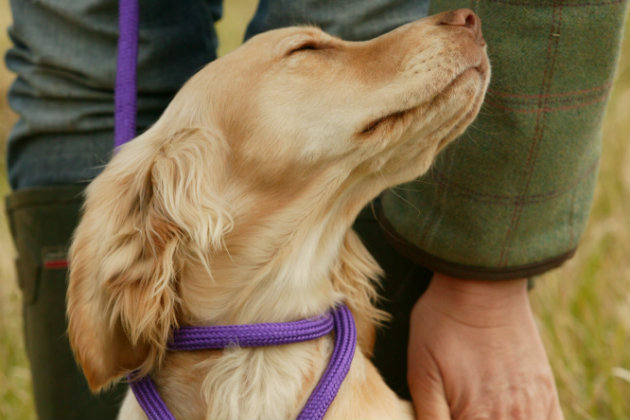Gun dog health: My dog has always lost a lot of weight towards the middle of the shooting season.
Win CENS ProFlex DX5 earplugs worth £1,149 – enter here
Why is my dog so thirsty? Is she ill?

Excessive thirst (referred to as polydipsia or PD on veterinary case notes) is not in itself a diagnosis, but it may be indicative of disease. There are, of course, some “innocent causes”, such as hot weather, prolonged exercise, change to a dry diet or increased salt in diet. Sometimes, all can play a part, so that your bitch, who might have lost fitness and body condition during her pregnancy, has found it hard to get going and your fellow beaters have been feeding her crisps! A quick review of how much you expect her to achieve physically and the quality of her food is worthwhile.
Causes of polydipsia
Regardless, persistent polydipsia should be considered a significant clinical sign that certainly deserves investigation. This need not necessarily be too expensive or complicated and should aim to differentiate the most common causes of excessive drinking.
These are:
- Diabetes: Lack of or resistance to insulin.
- Pyometra: Womb infection/endometritis.
- Liver disease: Infections, cirrhosis, tumours.
- Kidney disease: Infections, loss of function.
- Lymphoma: Common in golden retrievers.
- Cushing’s syndrome: Excessive production of steroid from adrenal glands.
- Hyper vitaminosis D: From over-supplementation, especially during pregnancy.
- Low potassium levels: Secondary to vomiting or other loss.
- Hypercalcaemia: High calcium levels secondary to lymphoma or other disease.
- Fanconi’s syndrome: Related to feeding jerky treats and involves kidney dysfunction.
- Pain: Dogs who are experiencing discomfort from back, joint, dental or abdominal conditions

The first place to start tests is with a urine sample
Urine test
- For lots of reasons (including cost) the first place to start is with a urine sample.
- Remember that the longer the delay between obtaining the sample and testing it, the poorer the results.
- Only a teaspoon or two (5 to 10ml) is required and this should be protected from bright light and refrigerated if there is to be a delay of over half an hour before testing.
- There are simple test strips, which your vet might even give to you to use at home, BUT one of the most important parameters is the specific gravity (or concentration) of the sample and the test strips are unreliable for this.
- Accurate specific gravity measurement, which is absolutely vital for diagnostic purposes, requires the skilled use of a refractometer.
Can dogs get colds?
Q: My dog has suddenly started sneezing. Can dogs get colds and flu like humans? Over the past few days…
Can you prevent arthritis in dogs?
Q: Is there anything that can be done to delay or prevent the onset of arthritis in older dogs? Controlling…
Urine samples can be tested for:
- Appearance: Clarity, concentration, turbidity.
- Specific gravity: Normally 1.005 to 1.045. Persistently low can be due to pyometra, water diabetes or Cushing’s disease.
- pH: Very low with diabetes/vomiting and inadequate nutrition and high with cystitis.
- Proteins: High with infections, nephritis, pyometra.
- Glucose: Presence is not completely diagnostic for diabetes, as some drugs and Fanconi’s syndrome can also be responsible.
- Bilirubin: Can be an indicator of liver disease.
- Blood: Lots of causes!
It may be that urine testing could immediately shed light on your bitch’s problem if, for example, she is diabetic or has kidney issues. Even negative results, however, are useful, because they rule out a considerable number of potential disease processes.
Trust your vet
As you might expect, examination by your own veterinary surgeon is very worthwhile, especially if he/she is someone who has seen her before and will therefore be able to compare her condition, body shape and demeanour with what they were previously. I am always astonished at the number of people who go here, there and everywhere for a cheap this-and-that and then only come back to me when their dog is unwell. It really helps to know your patient well! The examination will include checks for jaundice/pallor, abdominal palpation for liver, intestinal and spleen conditions, heart and lung assessment and palpation of the lymph nodes.
Unfortunately, further investigation, such as blood cell counts, abdominal X-rays or ultrasound scans and biochemistry analysis may also be necessary.
I repeat, however, what I said at the start of this article. Polydipsia should always be viewed as a possible indicator of disease.
Related Articles
Get the latest news delivered direct to your door
Subscribe to Shooting Times & Country
Discover the ultimate companion for field sports enthusiasts with Shooting Times & Country Magazine, the UK’s leading weekly publication that has been at the forefront of shooting culture since 1882. Subscribers gain access to expert tips, comprehensive gear reviews, seasonal advice and a vibrant community of like-minded shooters.
Save on shop price when you subscribe with weekly issues featuring in-depth articles on gundog training, exclusive member offers and access to the digital back issue library. A Shooting Times & Country subscription is more than a magazine, don’t just read about the countryside; immerse yourself in its most authoritative and engaging publication.











